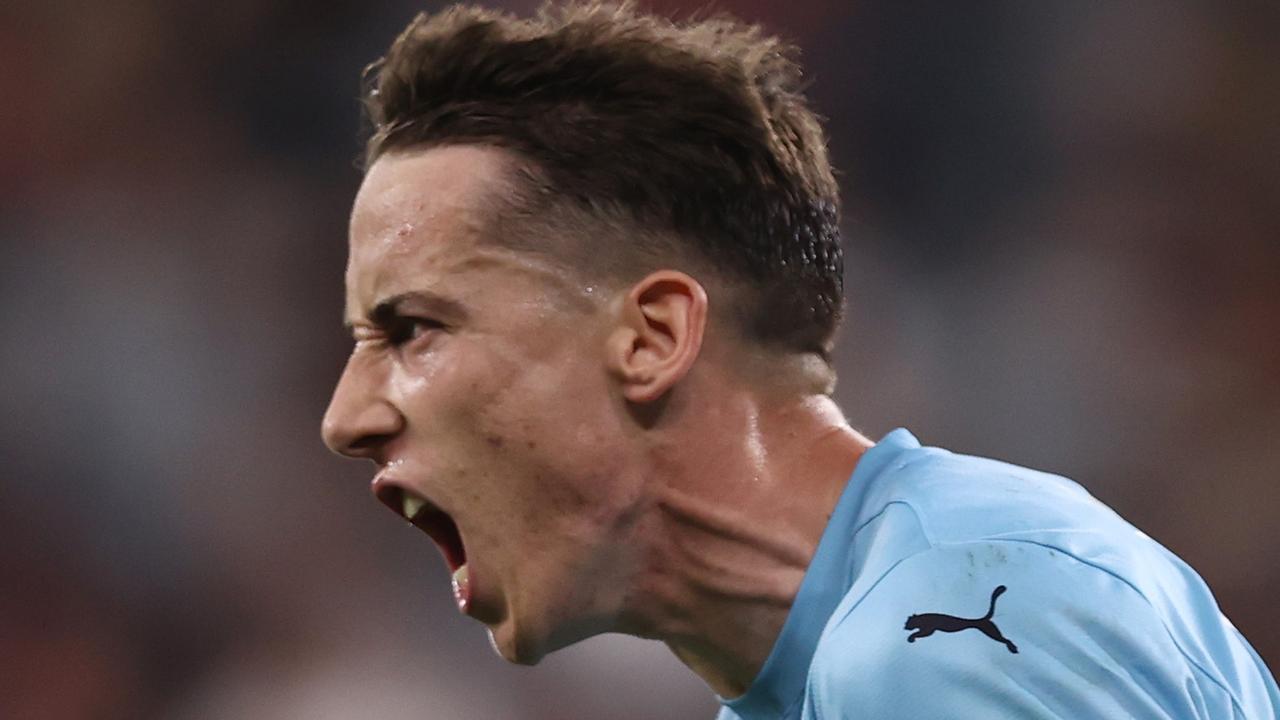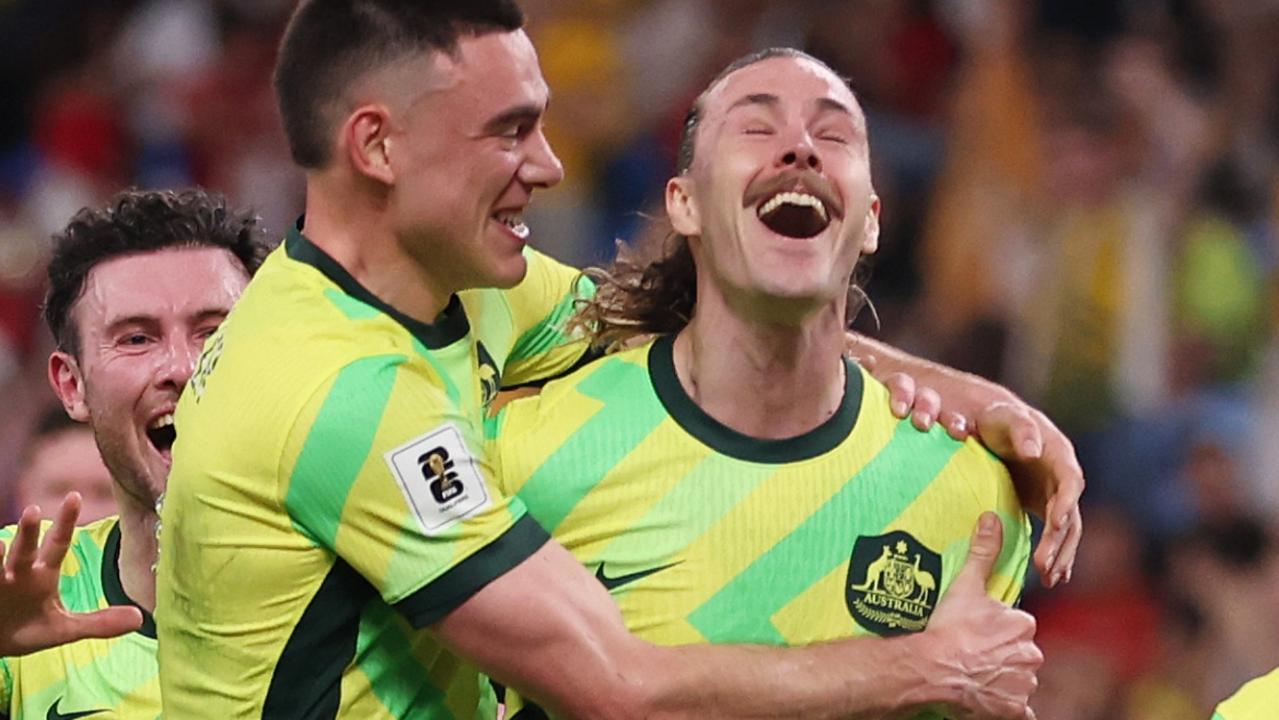Socceroos must learn from Japan’s defensive approach to become Asia’s dominant force
AFTER years of being the underdog, the Socceroos are now Asian football’s biggest scalp — and the players have to learn to deal with it.
Socceroos
Don't miss out on the headlines from Socceroos. Followed categories will be added to My News.
THE Socceroos are Asia’s most hunted and it’s something that the players must get used to.
Two points from the Saudi Arabia-Japan double header is underwhelming when six was realistic, but the games proved educational.
Australia could’ve won both but the Saudis and Japan both had gilt-edged late chances to snatch it.
Yet the Socceroos were the aggressors in both games as the opponents set out to frustrate Ange Postecoglou’s side in every sense — strategy, formation and gamesmanship.
AUSTRALIA LOSE TOP SPOT IN WCQ GROUP
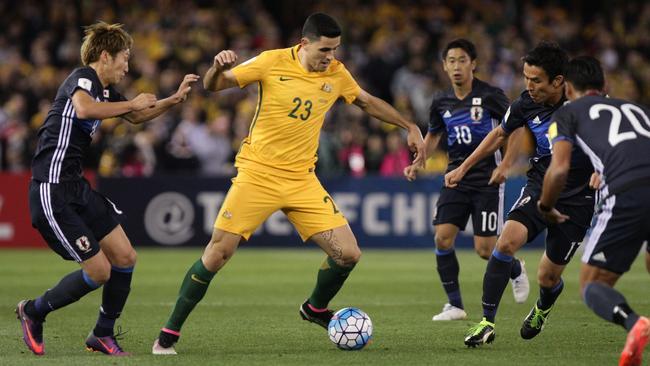
“I’m disappointed in the context of where we’re at as a team. We feel like we’ve made a lot of progress and we feel like we’re a team that home and away we can worry opposition and we have,’’ Postecoglou said.
“The major disappointment for me was that we wasted 45 minutes (against Japan), not so much the context of performances or results. We’re still well placed in the group.’’
LISTEN UP: Herald Sun football writers Matt Windley and David Davutovic join the pod to discuss the Socceroos’ World Cup qualifiers and look ahead to the huge Melbourne derby, where one Tim Cahill will make his A-League debut (in case you haven’t heard...)
The Socceroos have never before dominated a Japan side nor has a Samurai Blue side retreated as much as they did on Tuesday night.
Australia had 68 per cent possession and completed 643 passes to Japan’s 298.
Saudi Arabia, who top the group after a 3-0 win over the UAE, and Japan are Australia’s toughest group B opponents and coached by highly-rated European tacticians.
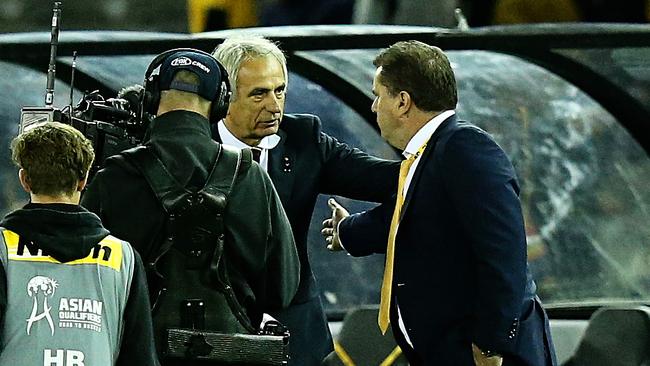
Bert van Marwijk, who guided Holland to 2010 World Cup final, and Vahid Halilhodzic, who’s led Paris St-Germain, Lille and Algeria, both counter-attacked and were content with draws, praising Australia as an Asian powerhouse.
Postecoglou has successfully overhauled Australia’s approach and now the challenge is to evolve.
Intelligent movement, firmer passing and more risk-taking is needed, starting with the defence.
They must develop more attacking variation and cutting edge, both of which will come with experience and players’ individual improvement and the emergence of new talent.
Defensive solidity and concentration is as vital, and turnovers such as Trent Sainsbury’s that led to the first goal need to be cut out.
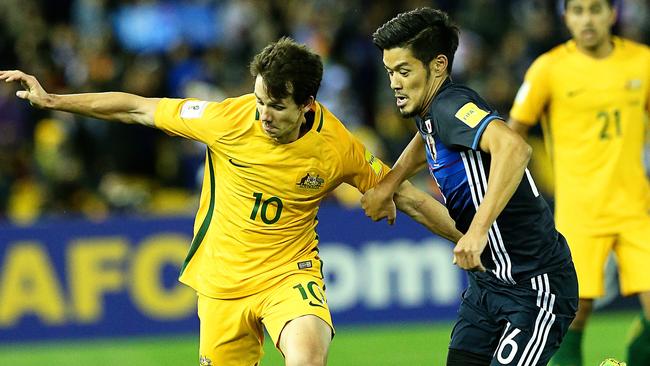
Postecoglou also has to adjust and he may not have picked that XI had he forecast Japan’s ultra-defensive setup.
The power and pace of Mathew Leckie and the attacking smarts and trickery of Robbie Kruse, who both started on the bench against Japan, were missed.
The players need to read the play too and after initially caught by surprise, they failed to react to Japan’s deep-lying tactics until the second half.
Reliable Mark Milligan and record scorer Tim Cahill are the types that would have made a statement through actions during a lacklustre first half, though physical demands came into play too.
A-League players will add competition now for the Thailand away clash, which is bordering on must-win.

